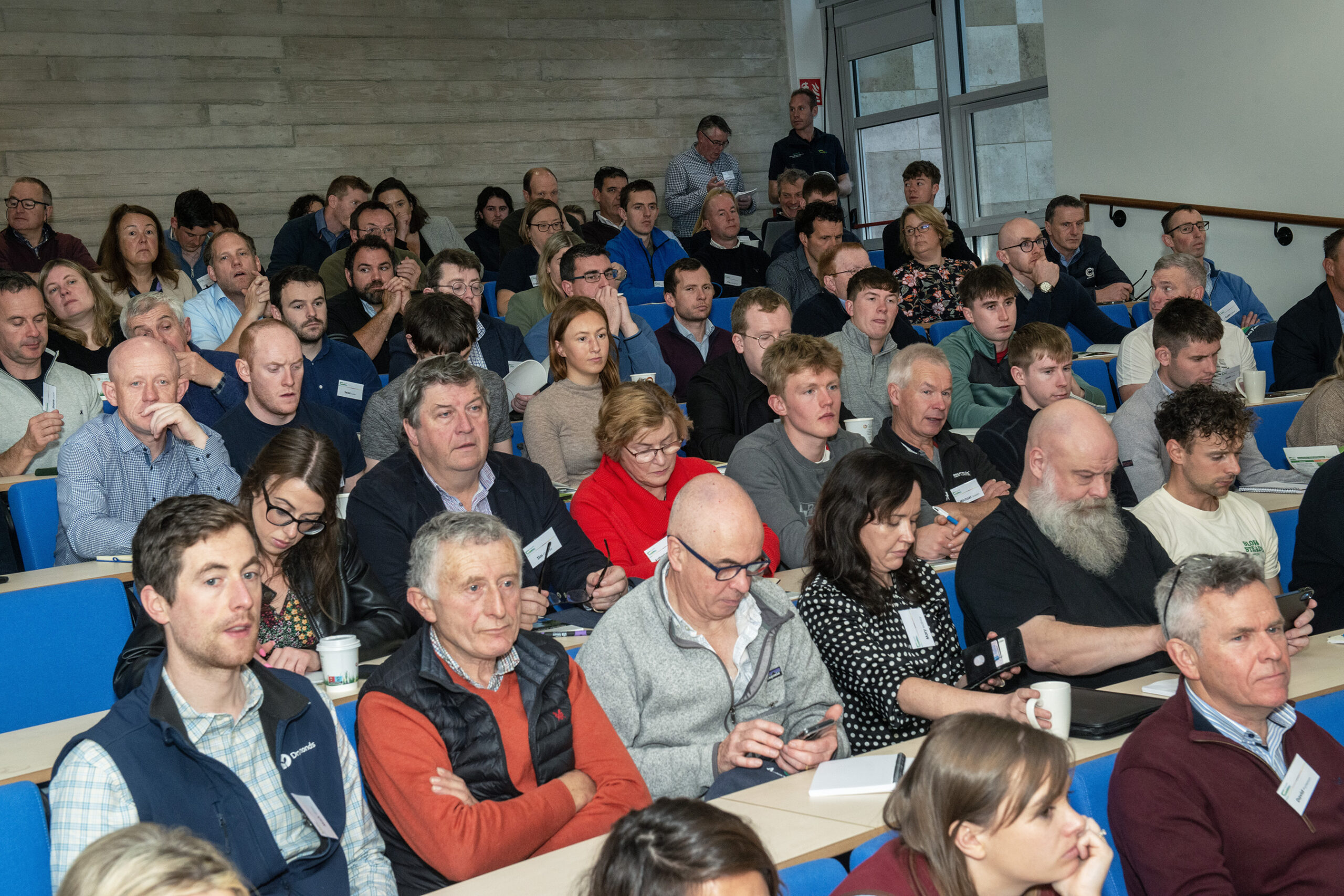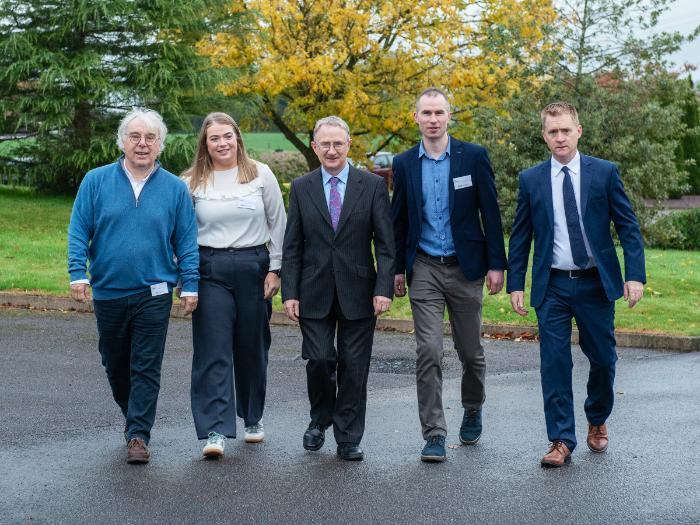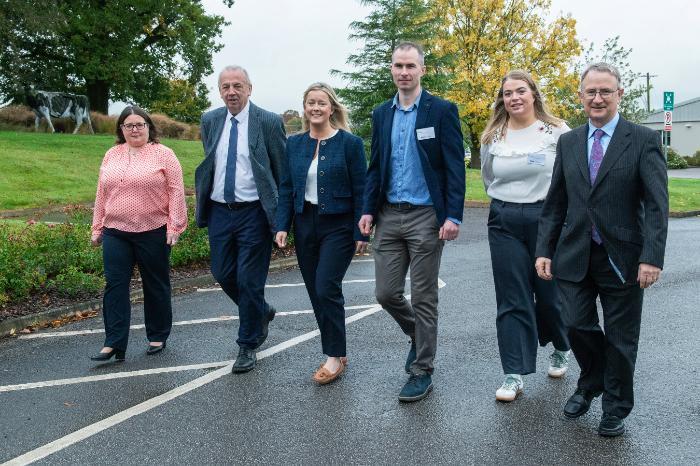15 October 2024
Coping with climate change – conference hears of necessary grassland adaptions

The Grassland Climate Adaptation Conference, held today, Tuesday, 15 October, specifically focussed on the key challenges and adaptations which are required to materialise in Irish grassland systems in the years ahead.
Hosted in the Teagasc Animal and Grassland Research and Innovation Centre, Moorepark, Fermoy, Co. Cork, delegates from New Zealand, Australia, United Kingdom and all over Europe, as well as multi-actor Irish delegates including grassland farmers, heard that the incidence of intense precipitation events, soil moisture deficits and droughts, and prolonged winter conditions are becoming increasingly frequent, resulting in challenging conditions for Irish farmers.
Opening the conference, which addressed the key adaptations that Irish grassland will need to undertake in the years ahead in order to cope with climate change, Director of Teagasc, Professor Frank O Mara stated: “Teagasc is very focussed on trying to best position farmers for the key climate challenges ahead.
“We have a number of key initiatives in this area, PastureBase Ireland, Moorepark St Gilles MoSt Grass growth model and AgNav are all working toward similar goals, the future proofing Irish ruminant productions systems.
“This is one of the first conferences arising from the new Climate Research Centre in Teagasc. We have heard today that there are real challenges ahead that we need to keep responding to. It will be important to support farmers with more climate effective technologies in the years ahead.”

Pictured at a Teagasc Climate Adaptation Conference in the Animal & Grassland Research and Innovation Centre, Moorepark, Fermoy, Co. Cork are speakers Luc Delaby, INRAe; Dr Ellen Fitzpatrick, Teagasc; Professor Frank O Mara, Teagasc Director; Brian Murphy, DAFM; and Professor Michael O’Donovan, Teagasc Head of Grassland Science. Picture: O’Gorman Photography.
A wetter and warmer climate
The conference featured key speakers from Met Eireann, PGG Wrightsons Seeds. New Zealand and INRAe France.
Dr Padraig Flattery from Met Eireann addressed the conference stating: “Ireland’s climate is 0.7°C warmer and 7% wetter when comparing the average period of 1991-2020 to 1961-1990.”
He further added: “Likely outcomes of further warming are: extended grass growing season; rainfall increasing in likelihood and intensity; prolonged heatwaves; and droughts, higher extreme temperatures, fewer cold extremes.”
The frequency and severity of climate and weather extremes is increasing. Irish grassland livestock production systems now has a lot more climate challenges. In 2024, we experienced a wet and cold spring, combined with intermittent dry periods throughout the summer, both having impacts on grass growth, and more recently intense rainfall wet weather in different parts of the country.

Pictured at a Teagasc Climate Adaptation Conference in the Animal & Grassland Research and Innovation Centre, Moorepark, Fermoy, Co. Cork are speakers: Dr Deirdre Hennessy, UCC; Professor Pat Dillon, Teagasc Director of Research; Fiona O’Donnell, Vice President Dairy Women Ireland; Brian Murphy, DAFM; Dr Ellen Fitzpatrick, Teagasc; and Professor Frank O’Mara, Teagasc Director. Picture: O’Gorman Photography.
Professor Michael O’Donovan, Head of the Teagasc Grassland Science Department, stated: “In the last 10 years of PastureBase Ireland, grazing management practise has improved on Irish farms. Spring grazing is now taking place earlier; increased grazing events are happening on paddocks; and grass Dry Matter (DM) production is averaging approximately 13 tonnes DM per hectare per annum. The transition to grass/clover swards is well underway on Irish grassland farms.”
There is now clear evidence that Irish grassland farmers are adapting to the current challenges. Although some technologies take some time to bed into farming practise, the role of PastureBase Ireland is now fundamental to the success of Irish farmers keeping grassland to the core of the farm business.
Dr Elodie Ruelle, Grassland Modeller at Teagasc, Moorepark, commented on the future trends in grass growth, remarking: “We expect overall grass output will be similar between years, with increases in winter growth and increases in the variability of summer growth. We will experience some extremes in moisture deficits, so grassland systems will have to build resilience to cope with such extremes.”
For further details, the conference proceedings are available here.
